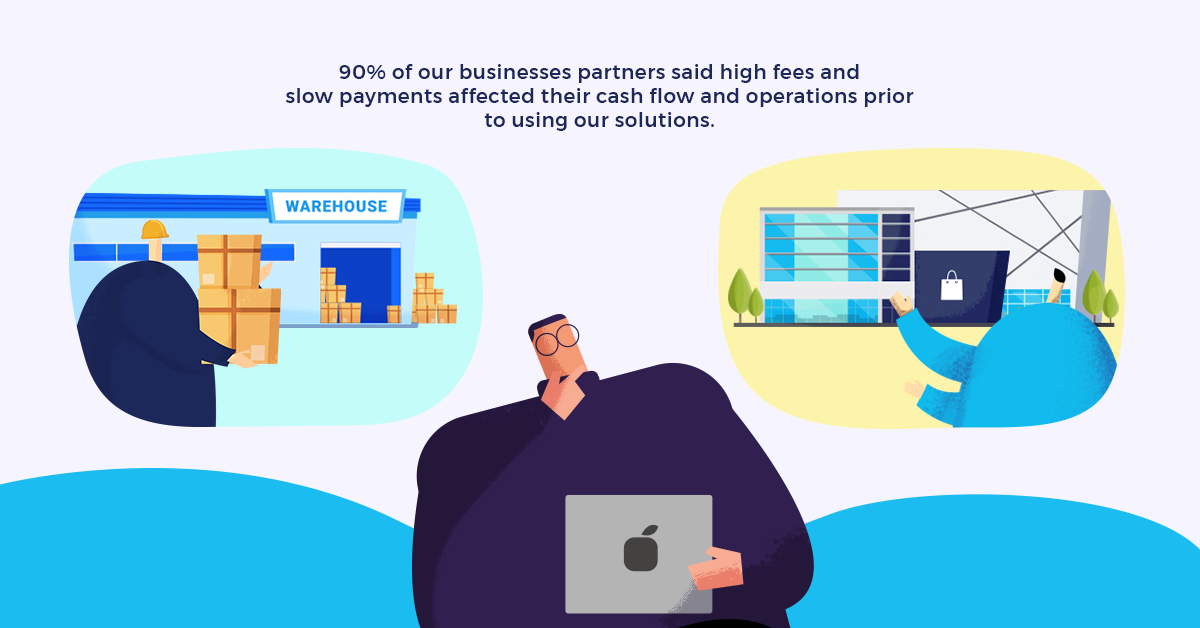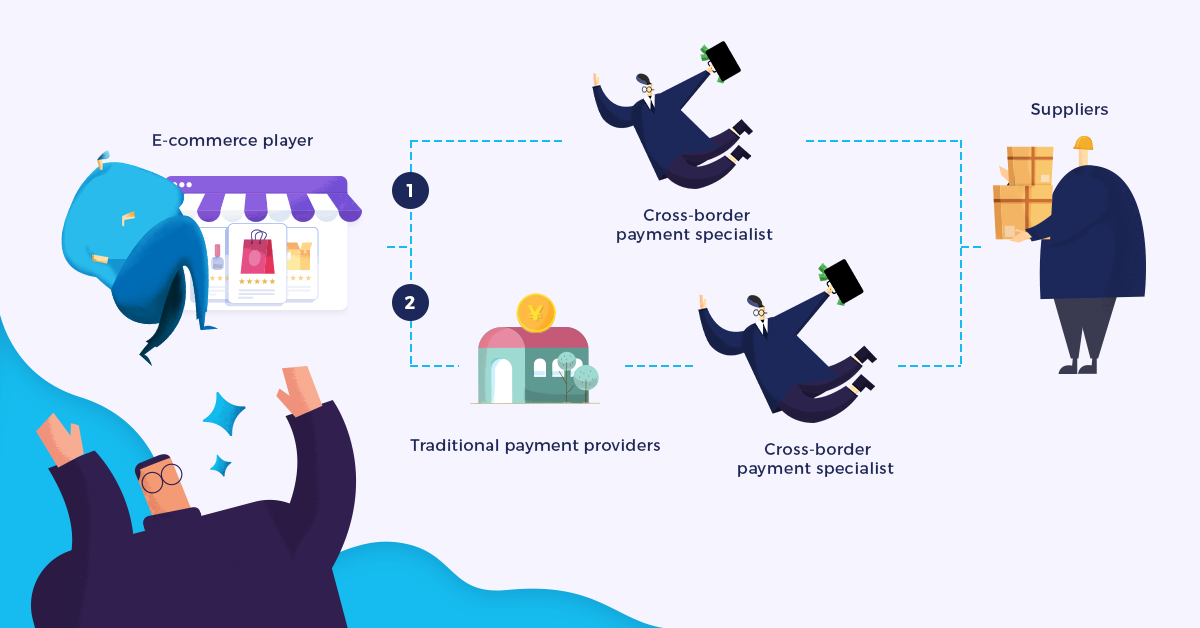Cross-border e-commerce transactions are more common than we think. In 2021, Southeast Asia’s cross-border e-commerce made up more than 40% of the entire e-commerce market of the region. Internet and smartphone penetration, as well as the availability of logistics and last-mile delivery services are some of the driving forces behind this boom.
The challenges of cross-border e-commerce

However, the rise in cross-border e-commerce has also led to an increasing reliance on regional and global supply chains. This makes cross-border business payments — the ability to pay and receive money quickly from customers and suppliers — a crucial part of any business looking for stability and growth.
That’s easier said than done. Cross-border business payments are complex. External factors such as pandemics and conflicts overwhelm logistics services, leading to delays and increased costs. Many businesses have reported as much as 200% increase in shipping costs during the pandemic, and the effects are still being felt today. This has a ripple effect. According to the IMF, one of the main causes of inflation is rising shipping costs: when that doubles, inflation grows by 0.7%. Inflation generally leads to a devaluation of currency, which leads to higher FX rates. Internally, businesses are forced to increase overheads to compensate, leading to inefficiencies arising from many different working parts.
Here are more not-so-positive statistics:
- 47% of international suppliers get paid late (Deloitte, 2019)
- 61% of small businesses face persistent cash flow problems (Quickbooks Survey, 2019)
- 90% of our business partners said they faced high fees before using our cross-border payment solutions
For cross-border businesses, a cost-effective business payment solution is non-negotiable.
Cost-effective business payment solutions
Businesses typically go to banks and card issuers for their business payment needs. But they have never been the best way to do so — FX markups, reliance on intermediaries, account maintenance fees and increasing margins mean a transaction fee can cost 2X as much as that of an alternative business payment solution, like Tranglo Business.

The call for alternative payment solutions is essentially a call for businesses to bypass intermediaries. It’s hard to fully disintermediate — mainstream financial institutions play a vital role in the ecosystem — but it may be the only option, especially for low-margin businesses.
Not only that, these businesses may find the pay-per-use model offered by alternative payment solutions more suitable as it gives them more control over cash flow than the strict prefunding requirements of traditional payment providers.
Remember what we said a while ago, that 90% of our business partners said they faced cash flow problems? Well, it turns out 70% of them told us that Tranglo Business and its flat fee model has improved their cash flow and decreased their overheads by 50%.
That’s not all. Imagine having access to full transaction reports that ease reconciliation and account keeping. FX management that gives the most competitive rates, smart compliance screening that never sleeps, and intelligent routing that picks the quickest and cheapest payment route every single time.
If you think you need an alternative solution for your cross-border e-commerce payment and collection, talk to us. We provide professional consultation at no charge (really). It is time to make payments work as they should — hassle-free, real-time transfers with no downtime.







